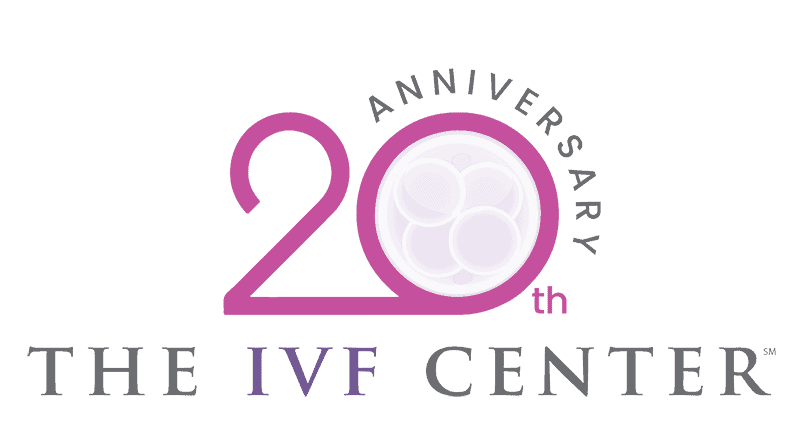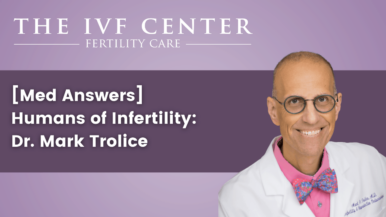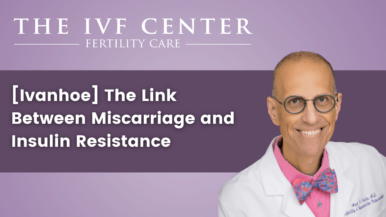“How much time do I have left to have a baby?”
 It’s one of the most common questions we hear at The IVF CenterSM office; but a simple new blood test has given women over 30 increased hope in their endeavors to start a family. The anti-Müllerian hormone (AMH) test costs under $100 and is being used to evaluate the ovarian reserve in healthy women and measure the potential number of eggs a woman has left.
It’s one of the most common questions we hear at The IVF CenterSM office; but a simple new blood test has given women over 30 increased hope in their endeavors to start a family. The anti-Müllerian hormone (AMH) test costs under $100 and is being used to evaluate the ovarian reserve in healthy women and measure the potential number of eggs a woman has left.
So, can AMH testing accurately measure your ovarian reserve and does it tell the whole truth?
At birth, females already possess all the eggs they’re ever going to have, an astonishing one to two million eggs after taking their first breath. After puberty, teenage women will be down to 200,000 to 400,000 eggs. As a woman ages, her eggs lose their vibrancy and for some women 35 and older, it can mean losing the capacity to initiate and maintain a healthy pregnancy.
The Rationale for AMH Testing
Until recently, the AMH test was primarily used for women already diagnosed with infertility prior to undergoing in vitro fertilization (IVF) treatment. The measure of AMH can help anticipate ovarian response to IVF stimulation medication and predict a woman’s IVF success rate.
Among healthy women, the prevailing wisdom among many doctors says that the amount of AMH in a woman’s blood can provide an indicator as to whether or not she will have infertility problems in the future.
Anti-Müllerian hormone is made by the tiny liquid capsule-like follicles in the ovaries, that house and nourish human eggs. By calculating the amount of AMH the follicles produce, it is thought, fertility specialists can measure the remaining number of eggs a woman has left.
The Facts About AMH Testing
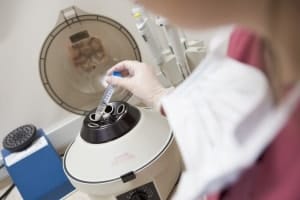 In order to accurately measure the amount of eggs a woman has, all the methods used to estimate ovarian aging including chronologic age, antral follicle count (AFC) and AMH, need to be combined and factored in together.
In order to accurately measure the amount of eggs a woman has, all the methods used to estimate ovarian aging including chronologic age, antral follicle count (AFC) and AMH, need to be combined and factored in together.
A woman’s natural fecundity begins to decline, on average, above the age of 32 or 33. If her AFC count is less than 11, it reflects diminished ovarian reserve (DOR) and less than 6 is considered severe. However, a diagnosis of DOR does not necessarily predict a woman’s ability to conceive. AMH levels below 1.6 have been shown to reduce the number of eggs that can be retrieved with IVF and may predict pregnancy outcomes; levels below 0.4 are considered serious.
Concerns About the AMH Test
The use of a screening test for diminished ovarian reserve in an otherwise healthy population at low risk for DOR may yield a larger number of false-positive results (i.e., characterizing a woman as DOR when in fact she has normal ovarian reserve). Therefore, if a relatively healthy ovarian population is assessed for ovarian deficiency, it may result in a false number of women testing positive for diminished ovarian reserve.
Very low levels of AMH (less than 0.4) can affect the outcome of IVF cycles. Using the Society for Assisted Reproductive Technology (SART) data from a population of women with a mean age of 39.4, cycle cancellation was 54%. During all attempts at egg retrieval, no oocytes were obtained in 5.4% and embryo transfer failed to occur in 25.1% of cycles. The live birth rate per embryo transfer was 20.5% (9.5% per cycle start and 16.3% per retrieval) from a mean age of 36.8.
What Does it All Mean?
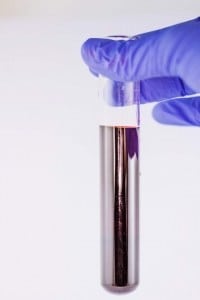 Random screening of AMH levels in women not diagnosed with infertility and less than 35 years of age may result in unnecessary alarm. While it is possible the results of AMH screening may compel women to freeze their eggs, extensive counseling on the implications and pitfalls of AMH levels is essential. There is no current evidence that AMH levels should be used to exclude patients from undergoing IVF.
Random screening of AMH levels in women not diagnosed with infertility and less than 35 years of age may result in unnecessary alarm. While it is possible the results of AMH screening may compel women to freeze their eggs, extensive counseling on the implications and pitfalls of AMH levels is essential. There is no current evidence that AMH levels should be used to exclude patients from undergoing IVF.
Therefore, physicians have a responsibility to their patients to explain the limitations of the AMH test. Low AMH levels in and of themselves, are not a cause for concern for having a family naturally, or from being ruled out for IVF treatment.
The American Society for Reproductive Medicine (ASRM) reports that the available evidence concerning the performance of ovarian reserve tests is limited by small sample sizes, heterogeneity among study design, analyses and outcomes, and the lack of validated outcome measures.
The only true constant is that age is still the scientifically soundest predictor of how much time a woman has left on her biological clock.
